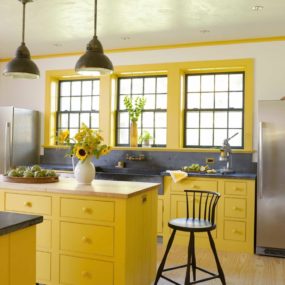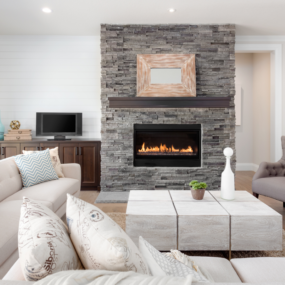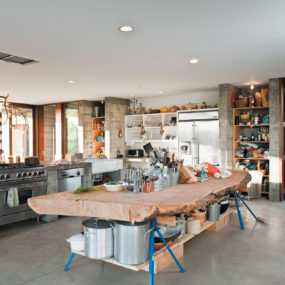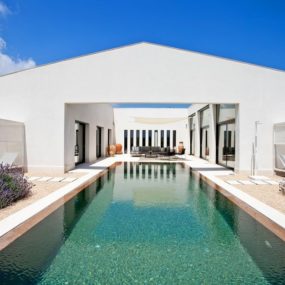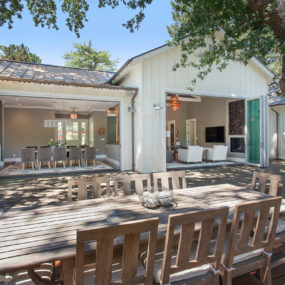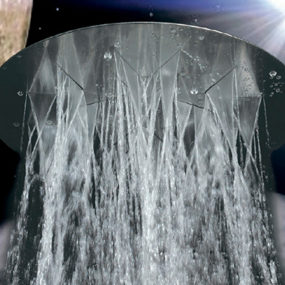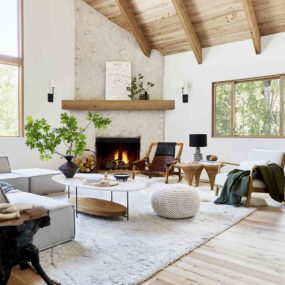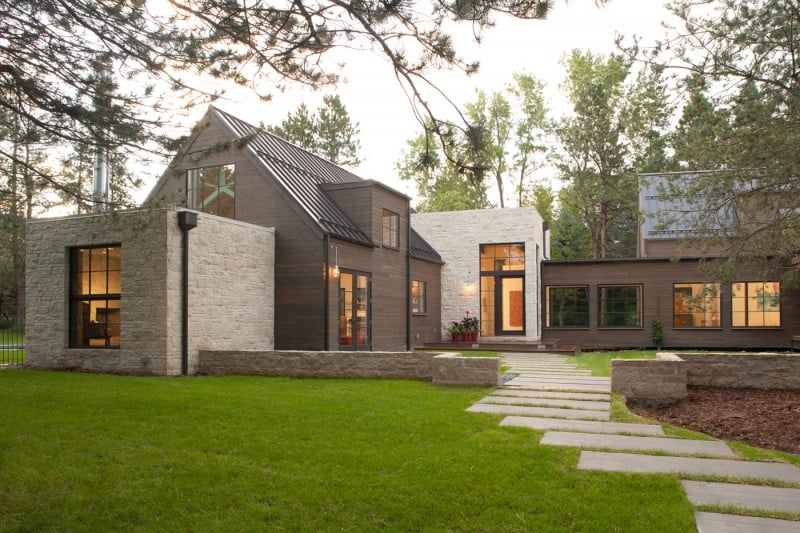
Set in the scenic city of Boulder, this contemporary home by Surround Architecture sharpens the curves and smoothes the finishes of the traditional farmhouse design, resulting in a home with the basic shapes and layout of a classic American structure and all the details of an ultramodern masterpiece. Built with alternating wood and stone exterior finishes, the woodland house works time-honored formats into modern rectangular modules with sophisticated splendor, accenting the sweeping size of the multipart dwelling. A matching poolhouse behind the main home compliments and extends the comfortably contemporary architectural spirit, extending current-day cues throughout the property.
Inside, the rule of the day for interior design is openness. Each main room in the house is open to high ceilings, wide windows, and to its neighboring rooms, capitalizing on the large footprint of the residence. Luckily, as a result of the clean lines and minimal fittings of the home both inside and out, the arrangement does not come off as overindulgently large. Instead, the entire house and property seems naturally spacious and amply sized for each room’s purpose. Throughout the interior, a single design theme is found on the fittings and the furniture, with color palettes and other individual choices suited to each room. This tidy family home features the best of both conventional and contemporary touches in every aspect of its design.
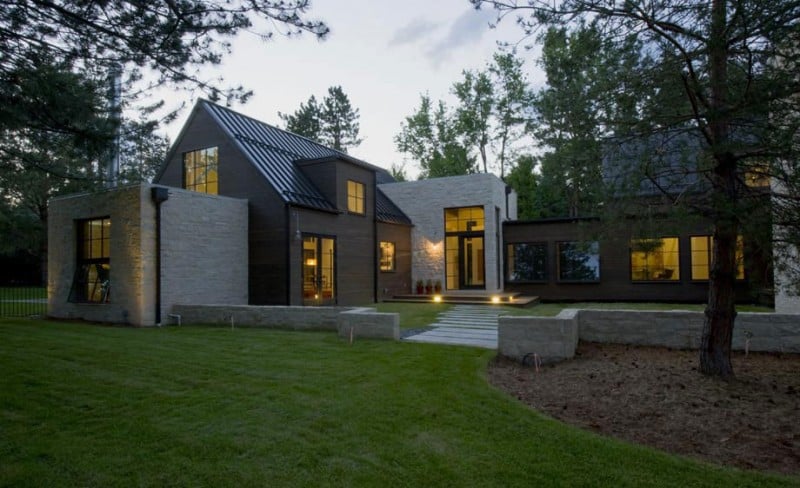
The rectangular sections of the home, usually covered in light stone, help to accent darker wooden-clad portions, bringing out the more traditional lines in those areas and providing a horizontal contrast to the tall gables elsewhere.
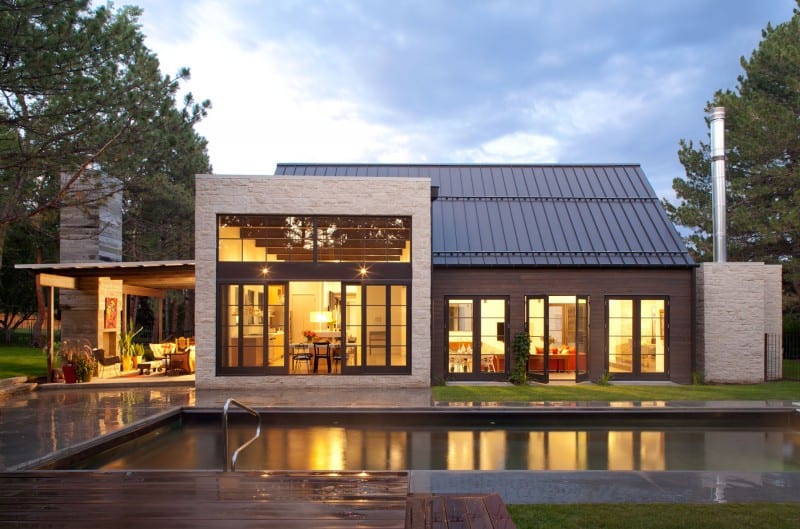
The largest of the home’s rectangular stone sections is at the rear, opening from the kitchen to the vast outdoor pool. The stone forms a full square frame around the windows and doors of the kitchen (creating a downward step from the kitchen to the yard), providing greater geometric impact than a bottomless rectangular frame. An outdoor living space is set under a corrugated metal awning and enclosed by a wood plank-covered fireplace with a roof-height smokestack.

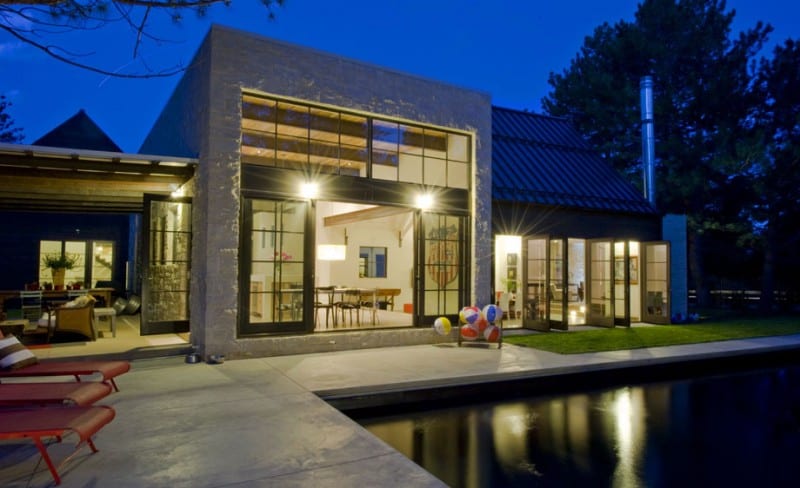
The backyard’s underfoot solutions are a combination of cool concrete, strategically-placed grass patches, raised wooden decks, and a private shroud of trees lining the property. Each different finish serves to direct activity in a certain direction (the grass, for instance, serves as a buffer to direct swimmers away from the living room and towards the kitchen or poolhouse).

There are nearly half a dozen dedicated living spaces in and around this home, including both the interior and deck of this poolhouse, a small building that could also potentially be transformed into a micro-cottage to accommodate sleeping guests.

The poolhouse shares its solid wooden structure with the taller parts of the house, but is low-profile in shape, avoiding a shed-like appearance. One side of the poolhouse’s living area is dominated by a retractable garage door, fully opening it up on Summer days.

All the openings from room to room in the public spaces of the main home are open in nature, taking full advantage of the wide and tall intersections between different modules. Still, a small amount of wall space on the sides and top of the barrier provide visual definition to each area, accented by a rusty beam and a set of steps leading to a change in flooring. While the different rooms are open to each other, they still are each distinct.
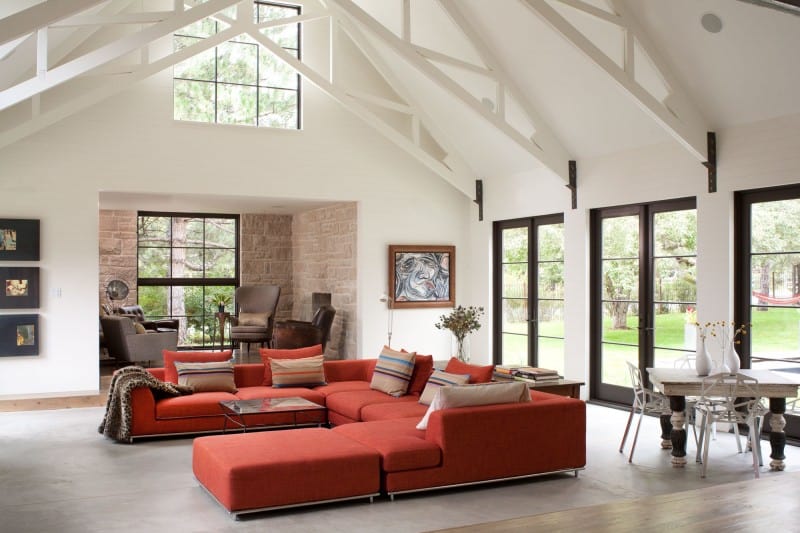
White space and wide windows accent three-dimensional spaciousness in the living room, which takes up one and a half stories of space in one of the more traditional modules of the building. A small stone-lined reading nook on one side uses darker furniture to create a sense of intimacy, housing the home’s interior fireplace.
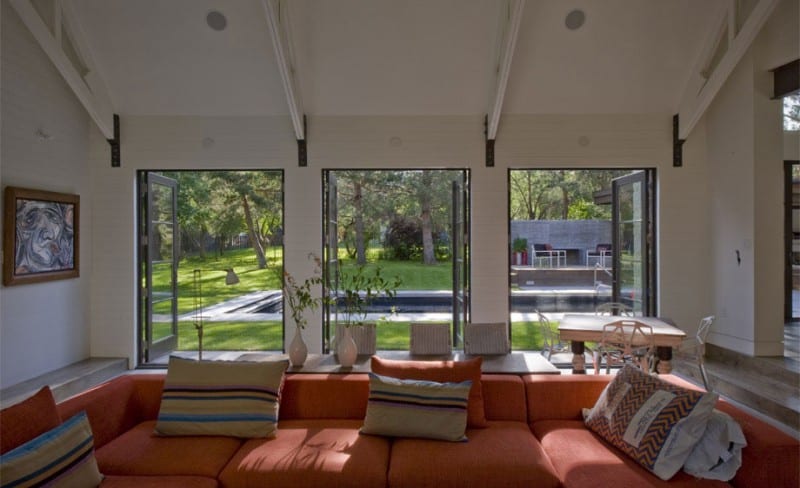
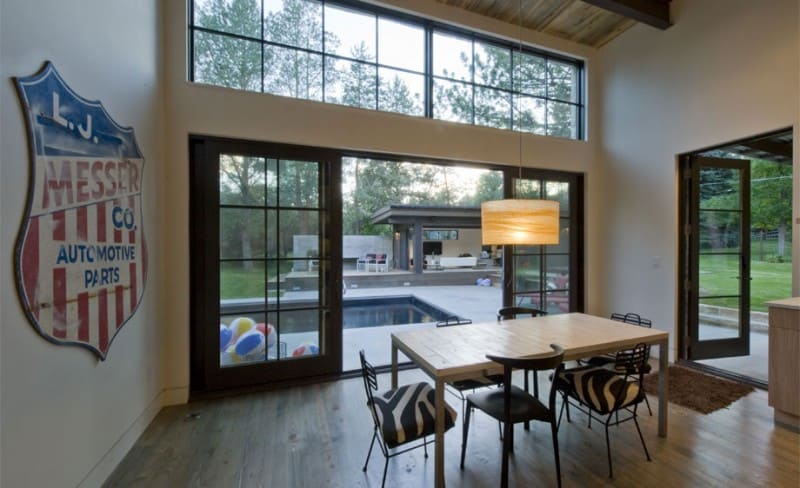
The hardwood-floor kitchen has nearly as much glass area as the living room, opening up onto the pool area on one side and onto the outdoor fireplace on another. A small, contemporary table allows residents to come together without the formality or distance of a large dining table.

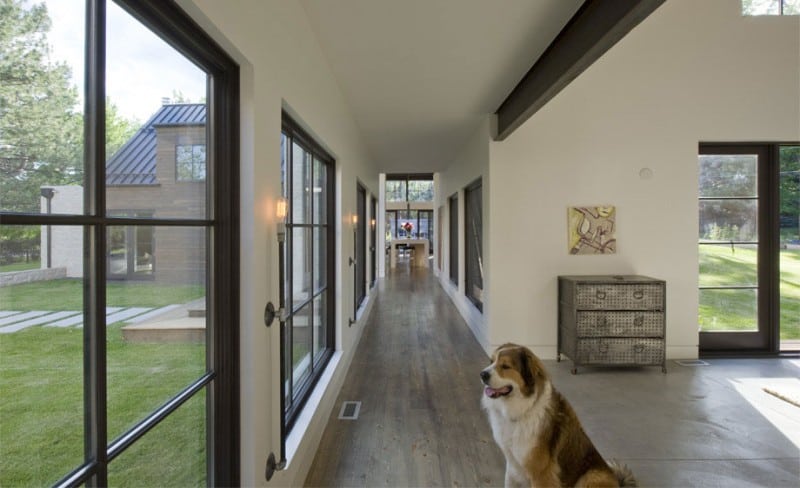
Instead of trapping hall space deep within the structure of a conglomerated house, Surround Architecture chose to branch the abode into two distinct wings, one for collective activity and the other for private pursuits. Because of this design, the connection between the two spaces is open and bright instead of enclosed and dim.
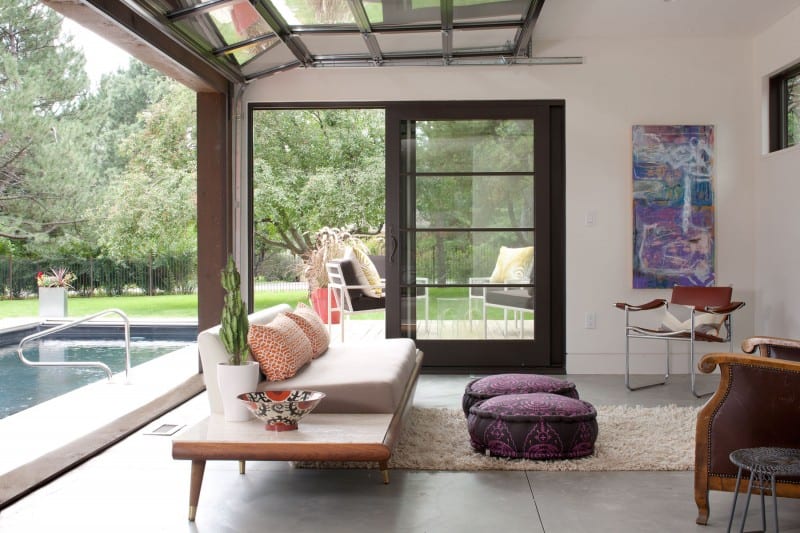
The poolhouse is a small living room all its own, a simple and tranquil respite from the main home or a meeting point for partygoers avoiding the water. The furnishings and accents all echo the design language of the main home’s living room en miniature.
Surround Architecture

